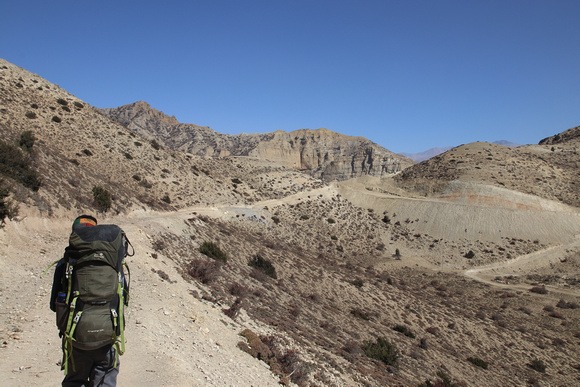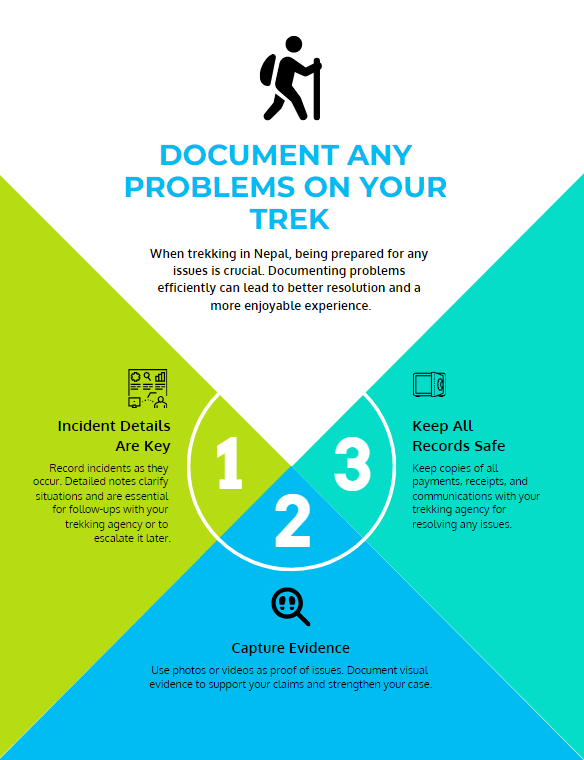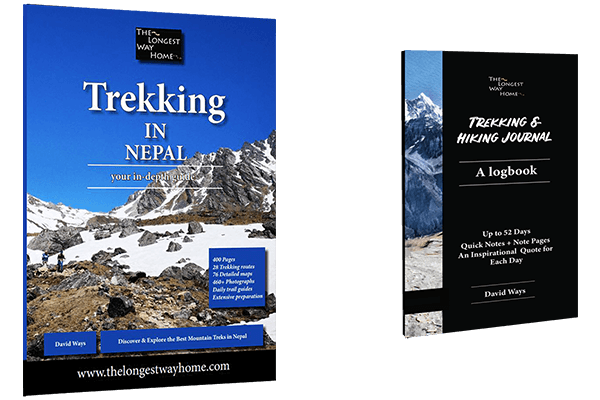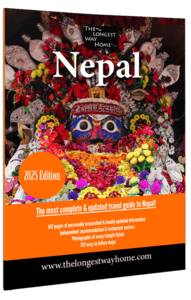

What Do You Do If You Had a Bad Experience With a Trekking Guide or Agency in Nepal?
Unfortunately, over the past year, there’s been a substantial rise in complaints about bad trekking agencies and bad trekking guides in Nepal. I’ve spent a lot of time analyzing why this has come about and what’s the root cause. The answer, like most things, was both staring me in the face and a combination of factors. However, there’s no doubt about the “new” central cause of these complaints. The real question is what to do about it?
Quick Summary
• If you have issues with a trekking guide in Nepal, first try to resolve directly with the guide
• For unresolved issues, contact the trekking agency by phone
• Official complaints can be filed with TAAN, though effectiveness varies
• Consider reporting to Tourist Police for serious issues
• Document everything and contact your embassy if needed
• File a report about a bad trekking agency with Missing Trekker
Moreover, what do you as a trekker do if you start having or had a bad experience with a guide or agency on your trek? Up until recently, there was only one thing you could do: Report the guide or trekking agency to the Trekking Agents Association of Nepal (TAAN). The same people that issue the Trekker Information Management System (TIMS), and said in 2023 that all trekkers now need a mandatory trekking guide, banned independent trekking, yet never set up checkpoints, nor ran an actual safety database of trekkers. They just took the TIMS money. It may come as no shock after reading this, that there is no official TAAN contact form to report issues. We’ll cover this in more detail.

There’s also an unfortunate issue started by the so-called “big” guidebooks back in the 2000s that said you could report issues to Nepal Tourism Board (NTB). Again, this is like writing a complaint with chalk on a rock and throwing it into a lake. NTB is a marketing company set up by Nepal to market or sell Nepal to the world (e.g., travel companies). It is not the Ministry of Tourism and Aviation, who are the actual people in charge of Tourism in Nepal. If you managed to get hold of someone from the actual ministry, you might stand a chance. Unfortunately, the ministry is not exactly open to tourists… yes, the irony.
So who or how do you make a complaint? We’ll come to that. Skip ahead if you want. But to really understand how your complaint is handled and why it came about, we need to look at why problems with bad trekking guides in Nepal are increasing.
Why Are Trekkers Having More Problems With Trekking Guides and Agencies Today Than Ever Before?
Key Contributing Factors
• Economic pressures and lack of regulation
• Post-pandemic industry changes
• 2023 solo trekking ban implementation
• Breakdown of oversight systems
First, the easy bit. The other factors: It’s the economy. It’s the lack of regulation. It’s the large corporate takeovers of smaller Nepali businesses. Next, we throw in the pandemic whereby many businesses shut down, and there was no support. Following the pandemic, a vast number of trekking guides called it a day and went overseas to earn money, most of which is sent back to Nepal. Then came the cost of living crisis as prices rose around the world and in Nepal. The latter basically exacerbated all the other factors. But the actual catalyst that triggered the rise in “bad guides” came in 2023.
In March 2023, TAAN and NTB announced a ban on solo trekking in Nepal. All foreign trekkers needed a mandatory trekking guide. TIMS cards could no longer be bought by trekkers and could only be bought from registered trekking agencies with TAAN. Trekkers were threatened with fines and worse if they did not have both a TIMS card or a mandatory guide. The problem? Aside from the actual issue of banning solo trekking, TAAN never set up checkpoints to monitor this. They simply took the USD $20 and never implemented their new or updated policy. The international trekking community objected, embassies paid the ministries visits to encourage them not to do this. They did not listen. These are the consequences. This was the actual catalyst to the rise in bad trekking guides in Nepal.
TAAN are meant to provide insurance to guides and porters, manage the safety of trekkers on treks, and provide training to guides. Despite their publicity, little was actually done both prior to the pandemic and most certainly post-pandemic. In fact, TAAN became so inept that the organization broke into two basic entities: TAAN Kathmandu and the breakaway TAAN Pokhara, who were tired of the joint organization not providing things like adequate trekking insurance to guides and porters. Prior to the pandemic, both organizations had checkpoints for trekkers on every trail. Today, there are none. Even with checkpoints, they were not well run, and whenever a trekker went missing, it was a case of looking up logbooks to know their last location. Finally, with training courses, TAAN runs them for new trekking guides for 30 days. Yes, become a trekking guide in 30 days. The curriculum is largely theory. Yes, they have outings, but certainly not on high altitude or full treks. Most of a trekking guide’s learning and experience comes after they get their license and join a company.
The Solukhumbu region (Everest) was the first of the popular trekking destinations in Nepal to leave the TAAN umbrella. They declared TIMS cards as no longer being recognized in the Solukhumbu area and introduced their own. For about two years, TAAN and NTB continued selling TIMS cards. A point that only cemented Solukhumbu, and others’, impressions that the TIMS card and indeed TAAN had no value. Today, more regions are following suit.
Quick Tips for Emergency Situations
• Tourist Police Emergency Number: 1144 (within Nepal)
• Contact nearest National Park Checkpoint or local police
• Ask any teahouse owner for immediate assistance
• Keep your embassy’s contact information handy
• Document all incidents with photos and notes

The 2023 Solo Trekking Ban That Triggered a Rise in Guide Complaints
With TAAN, the trekking ban on solo trekkers, the failure of establishing both checkpoints, difficulties in claiming insurance, poor guide training, forcing independent guides to join companies, and rural municipalities turning their backs on the organization, it lost any sort of authority it once may have had. TAAN became more of a money-sucking bane than being of any value to both trekking agents, guides, and indeed trekkers. Where once a trekking agency caught taking a trekker without a TIMS card would be fined or threatened with being removed from TAAN’s list of registered trekking agents, today it’s merely shrugged off.
Every year, individuals pay to have their trekking companies registered on TAAN’s directory. If one falls foul of someone within TAAN, they simply register a new company name and start over again. Moreover, most of TAAN’s directory and managers seem to own or have a stake in certain trekking companies. The term “conflict of interest” doesn’t seem to matter here. So, one might understand why submitting a complaint to TAAN about a bad guide or trekking agency might not get you very far. And, if it did, it’s likely not to have an impact.
With TAAN losing their “authority,” independent trekking guides aggrieved at having to join trekking companies for work, and trekking companies fed up with paying for nothing with no consequences, we have the catalyst. Over the past year, more and more trekkers have been experiencing bad to serious issues with their trekking guides and agents as there are little to no repercussions. The organization that was set up to help trekkers and guides seems to have lost its way completely. So, what does a trekker do?
Understand What the Problem Is With the Trekking Company or Trekking Guide
Not Guide’s Fault:
• Bad weather conditions
• Trail conditions beyond control
• Seasonal limitations
• Necessary schedule adjustments for safety
Legitimate Complaints:
• Unauthorized schedule changes
• Hidden extra charges
• Unprofessional behavior (drinking, smoking)
• Poor communication
• Safety concerns

Not all problems are the fault of the trekking agency or guide. The weather and trail conditions are two of the big considerations all trekkers need to take into account that are out of everyone’s hands. If you’ve done your trek preparation, you the trekker should know what time of year to visit Nepal, and what to expect then. Secondly, it’s again up to the trekker to research the current trail conditions. The latter might sound difficult, but reading a bad guidebook, a random YouTuber, or the like to think that this is the best trek in the world is not the way to go. You need up-to-date information on a trail. You should also be asking the trekking company long before you arrive the same things. If they are all positive and saying “no problem,” then you might want to think again. If they offer you some up-to-date information, you might be on to a good company.
Likewise, simple questions like asking “does my trekking guide speak good English” also need to be asked. How long have they been a guide? Are they from the area? All these things matter. This is why you should read how to choose a trekking guide in Nepal. There’s a reason I wrote it, there’s a reason it’s the oldest resource out there, that’s why others have tried to copy it, and why I continue to keep it up to date. Things constantly change in Nepal. Which is again why I keep this information up-to-date. And why I’m brutally honest about it. If you don’t ask these questions, you have no fallback.
A trekking agency is not the place to find the answers; they are the ones selling treks, not the ones who act as an ombudsman. Much like buying a car—how likely is it the dealership will highlight the problems vs. how great the car is?
On the flip side of things, some trekkers want to limit their budgets and scrimp on everything. For a guide, they’ll take a porter-guide. Then they’ll expect that the porter-guide act like a fully qualified guide. They are not. They are trainee guides. This one irks me quite a bit as I’ve seen quite a few trekkers in the past few years stay in $100 hotels in Kathmandu, yet gripe over paying a guide $30 a day. Worse yet, pay less for a porter-guide and treat them poorly. In this sense of complaints, there really is none toward the trekking agency so long as they explained any limitations a guide or porter may have.
Being cheated by a trekking agency or guide can happen. It usually happens before you arrive by paying inflated prices. Or if you go to a trekking agent’s website to get information about trekking in Nepal. Again, it’s due diligence and up to the trekker to make sure they are paying the right amount for that trek or getting the correct information about a trek. Every trek in my Trekking in Nepal book contains prices and honest day-by-day walk-throughs. Likewise here on this website. There’s really no reason not to know. Still unsure, my Find a Trekking Guide Service makes everything up front.
Lazy Guides, or Guides Not Wanting Long Treks?
Having a guide who doesn’t want to trek long treks or days is becoming a more common issue. Yes, it’s not a typo. Most treks are 4 hours in the morning and 4 in the afternoon. Again, depending on the trek. If the trekking guide is only taking you 2 hours and insisting it’s enough (aside from acclimatization issues), and again in the afternoon only wants to trek for 2 hours, then yes, there’s a problem. Some agencies draw out itineraries to make more money from a trekker by increasing the number of days there are on a trek. Again, you need to do your research first. If, on the other hand, the guide is not giving you a good reason or refusing to communicate, then you do indeed have a problem.
The next issue is that many trekking guides don’t want to go on long treks. They want the short 3-5 day treks. Why? It means more money for them going on several short treks in a season than one long one. They get more tip money into their hands too. Again, the lack of regulation here comes into play. Tip money usually goes directly into a guide’s hands versus salaries, which usually go to the trekking company who then pay the guide. Guides prefer short treks as there’s a greater chance of getting more tips into their hands. Not sure about tipping guides? Learn about how much you should tip a trekking guide in Nepal?
Keep in mind: guides that are drinking alcohol every night or smoking while trekking are also becoming increasing issues for trekkers. Being charged extra for things like meals or accommodation are issues. A lot of this comes from younger seasonal guides looking to make some cash on the side. All guides should tell you up front the cost of something. And, if necessary, explain why it should be paid, e.g., hot showers when your trek package does not include hot showers, etc. Again, doing your research before a trek will save you all this hassle with bad trekking guides in Nepal.

How to Deal With Complaints About a Bad Trekking Guide or Agency
Firstly, it’s probably best to deal directly with your guide if there is an issue. Let’s say smoking during the day. A quick conversation that you don’t like smoking might solve the issue. Simply stewing away and muttering to yourself won’t get you anything except high blood pressure. If the guide continues to smoke, then a more serious conversation could be had but not an argumentative one. If that fails, you may have to contact the trekking agency itself and explain the situation. This is usually done by phone, and not email. Though if they have a good rapport with WhatsApp or messaging, it could be an option.
So what happens if the trekking agency says they’ve done something about it, but the issue persists? Well, you’ll need to contact them again. There’s a good chance that one of the better agencies has contacted the guide and asked them to stop. If they didn’t, depending on where you are on the trek, you don’t have many options. The trekking agency might offer to send out another guide. But it will cost them a lot, so they’ll be reluctant. The previous guide will want a salary, the new guide will want a salary, and they both will want transport fees. You also don’t really want to be trekking with a trekking guide that is just about to be replaced, as they more than likely won’t be in a good mood. A good option, if you have the time, is to stay in the same place while a new guide comes. But a better option, depending on the situation, would be to let the smoking issue pass and make a complaint later.
What if the situation is more serious and the guide or agency don’t do anything? Again, depending on the situation, you may decide to cancel the trek and lodge an official complaint. In the rise of complaints, cancelling a trek in the middle of a trek is still rare. Most people resort to contacting the agency, and if unsuccessful, want to lodge an official complaint when they return to Kathmandu or Pokhara.
Naturally enough, if there is a serious issue on the trek, there are either National Park Checkpoints (different to TAAN), police, or rural municipality offices throughout trekking regions. If you don’t know where to find one, asking a teahouse or lodge owner will help. Likewise, if you are not comfortable with trying to find any of the aforementioned by yourself, you could also call into a teahouse or lodge and ask to speak to the owner, tell them the issue, and that you need help. They will know who to contact nearby. Nepali people in rural areas are generous and helpful. If you are in distress, they can find you help.
Step-by-Step Problem Resolution:
1. Direct conversation with guide
2. Document the issue
3. Contact trekking agency
4. Seek local assistance if needed
5. File official complaints if unresolved

Alternative Reporting Options
Post-trek, if your complaint is about a trekking guide, then your first port of call will be the trekking company you hired the guide from.
If you feel the trekking company has not acted, or your complaint is about the trekking company, then officially, TAAN is the only organization who is “meant” to act on complaints about bad trekking guides in Nepal. Unfortunately, you may not get much satisfaction from them.
- Trekking Agencies’ Association of Nepal (TAAN) (Kathmandu) +977-1-4540920, 4540921, 4527473 [email protected] [email protected] https://www.taan.org.np/
- Trekking Agencies’ Association of Nepal (TAAN) TAAN Gandaki (Pokhara) +977 61-456921 [email protected] https://taanpokhara.org/ https://www.facebook.com/p/TAAN-Gandaki-100064495640725/
- Ministry of Tourism (Kathmandu) +977-1-4211620, 4211846 [email protected], [email protected] https://www.tourism.gov.np
- Nepal Tourist Police Bhrikutimandap Kathmandu (Inside the premises of Nepal Tourism Board) +977-1-4247041, 1144 Within Nepal dial 1144 [email protected] www.nepalpolice.gov.np
If the trail and its conditions are the issue, then the National Park officials are who you should complain to. Details for each National Park will be on your permit. Otherwise, your embassy is a good place to complain to.
More Proactive Places to Make a Complaint About a Trekking Guide, Agency, or Even Trail Conditions
Your own embassy, if they have a presence in Nepal, is a good place to send a complaint. Embassies received a lot of complaints about the 2023 solo trekking ban and many brought these complaints to the ministry and others within the tourism industry of Nepal. If your embassy simply brushes it off, then it might be time to contact your department of foreign affairs at home about that embassy in Nepal. They are there to support you, so make use of them!
Missing Trekker has a form for reporting bad trekking guides or agencies in Nepal. They have been independently logging and reporting on missing trekkers in Nepal for over a decade and have also started taking reports from trekkers on bad trekking guides, bad trekking agents, and even bad trail conditions. They will also reply to you with further information that may help. Moreover, they will keep your complaint confidential and will use the information to highlight the issue. Simply fill out their form on reporting a bad trekking guide in Nepal.
Complaint Documentation Checklist
• Written details of incidents
• Photos or videos if relevant
• Copies of all payments and receipts
• Communication records with agency
• Guide’s license number if possible
Remember:
• Stay calm and professional when dealing with issues
• Document everything in writing
• Keep copies of all communications
• Consider cultural differences
• Focus on safety first
To conclude: the biggest issue out there at the moment is trekkers not doing enough research before a trek. Yes, it can be a pain reading through things. But to be honest, it’s really not that time-consuming. Find the trek you want. Read about it. It’s an evening or two’s work. Don’t make it a chore; make it due diligence. Trekkers that do this research are an absolute dream compared to those still wondering why they can’t get an espresso or private toilet on certain treks!
Get My Trekking in Nepal Guidebook & Discover More Than Anyone Else!
Looking for more insider tips and information like this? Get the most up-to-date, popular, and dedicated guidebook to Trekking in Nepal in the world. Covering 29 full treks over 400 pages. The only trekking guidebook in the world with trekking links showing you how to link treks together! Available as an instant download or worldwide shipping for the paperback edition!
Take a look below and you’ll find out why this beats all other guidebooks!

Or


I wish I had read this before my trek last autumn! Our guide constantly tried to shorten our days and seemed irritated when we wanted to follow the original itinerary. The tip about contacting the agency directly by phone rather than email is something I’ll definitely remember for next time.
Shortening treks is quite common with bad guides. They are simply increasing the number of days on the trek by reducing the number of hours – thereby getting more money. Yes, calling the agency is better than emailing.
During my Annapurna trek last year the lack of checkpoints was obvious, and our guide seemed to make up his own rules. Why we need to pay $20 each for TIMS when there is not a checkpoint? I’ll be bookmarking that Missing Trekker reporting form just in case I need it on my next visit.
Zero checkpoints, but always the threat of them appearing. In many cases the TIMS card should cover the guide for their insurance, and that’s why they need it. Though the trekking companies could take out independent insurance, TAAN can still threaten to remove them from “officially” recognized trekking companies.
Thank you for explaining the situation so clearly! I’ve been planning my first trek to Nepal and was confused about the solo trekking ban.
Glad to help Sarah.
Having just returned from EBC, I can confirm many of these issues are real. Our guide was excellent, but we met several trekkers who weren’t so lucky. The financial pressure on guides are clearly having an impact on service quality.
Yes, the pressure on guides comes from trying to earn enough to live for the year. Many guides have other jobs, and take time off to do a trek in the hope of earning some more.
I was shocked at how TAAN seems to be failing both trekkers and guides. There really is no regulation in Nepal. For readers here – My main issue was with the trekking agency before we even arrived. We agreed on the price, then they kept adding on things like private jeep, attached bathroom, wifi charge. In the end we found this website and were saved. I also recommend David’s find a guide service. All the problems went away instantly and we had a great trek with a wonderful guide. Everything was so clear with David compared to the first trekking company. Night and day!
Thank you for the kind words Victor. I’m glad to have been able to sort things out for you! Likewise, it’s great to know you enjoyed your trek so much with the guide.
As someone who trekked independently before 2023, the changes you’ve described are concerning. The tourism industry in Nepal needs better regulation, not just more rules that aren’t enforced.
Yes, there are many rules, but few of them are enforced. It’s become a stain on the tourism industry. Unfortunately many people don’t do enough research, or read in the wrong places and end up with problems.
We experienced a guide who was constantly on his phone and uninterested in sharing information about the trail or culture. I wish I had known to document everything as you suggest!
I have a clear rule with any guide I trek with. “No looking at phones on the trek”. They are free to do so at lunch time etc. But to be on calls constantly unless it is a family emergency is a big no no for me. Worse yet are guides looking at videos or gaming!
Helpful tips for spotting and avoiding unprofessional trekking guides in Nepal! We will be verifying credentials and using reliable agencies for a safer trek.
Glad you found it helpful. All the best on your trek!